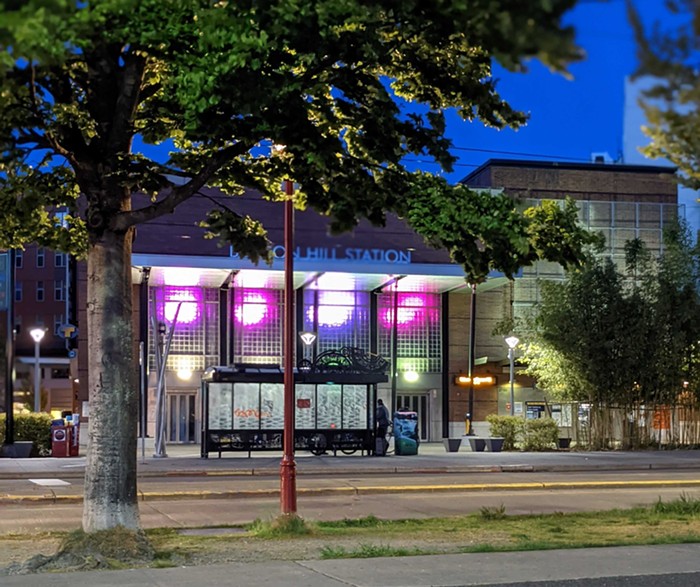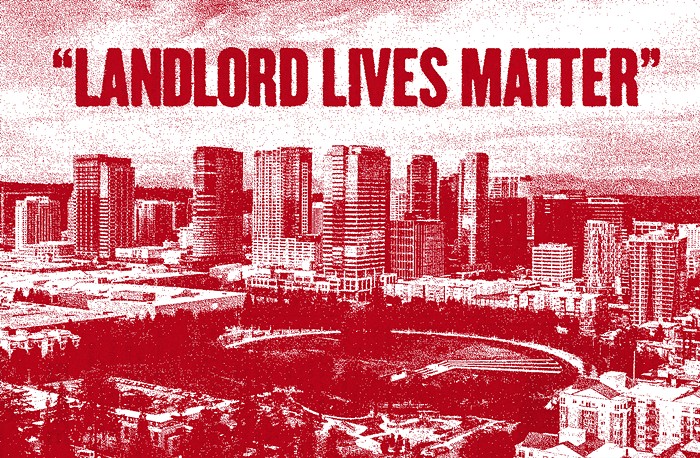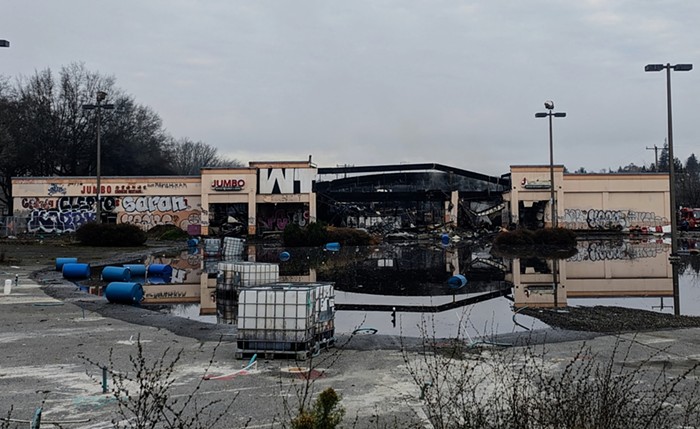
Ramona Brown’s days often begin with a question: Did she wake up to the sounds of construction work? If the answer is yes, either she or her partner quickly moves to the front seat of their van and moves the vehicle “so [nearby workers] don’t call the police.” The days vary, but the endings usually feel like a familiar cycle.
“Worry about where you’re going to sleep the next night,” Brown said, “where to park.”
Brown was pushed out of her South Seattle apartment about two months ago after the landlord raised the rent. She fell behind and she agreed to leave in order to avoid eviction. The apartment had multiple documented housing code violations, including rats and mold that Brown said aggravated her asthma. But Brown, who has multiple health conditions, had few alternatives.
Brown relied on the $725 a month she receives in Supplemental Security Income. Her longtime partner Jose Mendoza lost his job due to an injury shortly before they faced eviction. Average rent in Seattle is around $1,880 a month. As they counted down to their move-out date, the pair couldn’t find a shelter. So Brown and Mendoza moved into their minivan.
Brown’s eviction story underscored several gaps in Seattle’s tenant protection laws: Despite a city law barring rent hikes at substandard buildings, Brown said her landlord raised the rents while she lived with rats and mold. (The landlord disputes this.) And even after the city documented the code violations, inspectors found conditions weren’t dire enough to qualify Brown for moving assistance. Now she’s caught in another shortfall of the city’s response to the homelessness crisis: the lack of affordable housing.
Brown has sought out help from case workers, called shelters and tiny house villages looking for space, and undergone an assessment meant to figure out how high she should be placed on the list of people waiting for housing.
But the problem now is simple—and stark. “The overwhelming situation is there just aren’t enough housing units and there are way too many people who need shelter,” said Daniel Malone, executive director of the Downtown Emergency Service Center. “In a system like that, the vast majority of people are going to be frustrated most of the time.”
Developers are building new apartment buildings in Seattle, but for low-income tenants specifically, the housing stock has dropped. According to one consulting firm’s analysis, King County has seen a 10 percent increase in housing units affordable to higher income residents since 2014. But in that same time, the number of units for lower income residents has fallen by 13 percent.
That gap means long waits for people experiencing homelessness, and those waits can take a mental and physical toll.
People entered into the countywide system for prioritizing people in need of housing, Coordinated Entry for All, waited at least six months for housing, according to the county. The wait was longest—204 days—for single adults.
Brown is on multiple waiting lists. She said she’s been on the waiting list for the King County Housing Authority for “six or seven years” and recently got on the waiting list for the Seattle Housing Authority, too. Both offer deeply subsidized public housing with rents set based on tenants’ income. And both are buried under a demand that far outstrips their supply. In April, 8,500 households were on the Seattle Housing Authority’s waitlist and more than 14,000 people were on the waitlist for the King County Housing Authority. Both agencies also received around 20,000 applications each for housing vouchers.
“It’s hard on individuals,” said Jeanice Hardy, YWCA Regional Director of King County Housing Services. Clients seek out shelter while they “wait on that magical call” for housing, Hardy said.
Brown and Mendoza now spend most of their time near a park in South Seattle. Parking on the street next to the park isn’t allowed past 11:30 p.m., so they either move or try to lie low. At night, Brown avoids using her tablet computer for fear police might notice the lights through the window.
“I’m just in survival mode,” she said.
Mendoza has picked up occasional landscaping work, and the two can visit a local food bank twice a week. But the waiting has affected Brown’s health. Brown said she has slipped into bouts of “deep, deep depression,” considered suicide, and relapsed into drinking alcohol. When she’s feeling overwhelmed, Brown has turned to beadwork and making dream catchers to try to relax.
Brown tried to stay with her sister, but they quickly had a falling out. Her brother is now living on the streets, too, she said. She got a couple nights in a hotel from a church charity. When the couple tried to stay in a self-managed tent encampment, they couldn’t endure the sanitary conditions, they said. Recently, Brown has received offers from social service agencies to help pay her deposit and first and last month’s rent on a private market apartment, but can’t find a place she’d be able to afford each month beyond that help.
Across King County, more than 12,000 people are experiencing homelessness, according to the latest one-night count. Nearly 3,400 people sleep in cars, vans, and RVs, and of those, about 2,300 are in Seattle. Both of those are increases from 2017. And no one knows how many of those people once lived in low-income housing. To Brown and Mendoza, it felt like the only choice.
While city officials have sanctioned tent and tiny house encampments and debated their policies for clearing tent encampments from public land, there has been less concentrated focus on people living in vehicles.
When former mayor Ed Murray's administration opened a safe lot for people living in vehicles, including staffing and electricity, the program proved too expensive. Council Member Mike O'Brien later proposed a diversion program to exempt people living in their vehicles from tickets and towing for one year if they enrolled in a program providing social services. The council never took up O'Brien's proposal.
The short-lived employee hours tax on large businesses included a tentative spending plan that would have funded low-income housing and directed about $1 million each year to safe parking spaces and outreach for people living in their vehicles. But after business and public backlash, the city council repealed the tax before it took effect.
Living in a van and trying to avoid the police is hardly a solution. In the course of the last two months, Brown has run out of medications and had to throw away insulin because she had no way to keep it cool. When the heat aggravated her asthma, she plugged her oxygen tank into an outlet at a nearby food truck after-hours, hoping no one would notice. After struggling to find a shower during the recent heat wave, she took a swim in the Duwamish despite Mendoza urging her not to because of pollution.
Service providers have instructed Brown to call a list of shelters, encampments, and tiny house villages every day to ask if they have open spots. Temporarily without a phone, Brown has borrowed from people she meets in the park to make the calls.
Now Brown is aiming for a spot in a new tiny house village the Low Income Housing Institute plans to open in the Central District. She hopes moving into a LIHI village could help her access permanent housing.
But it’s not yet clear exactly when that village might open. And, according to LIHI executive director Sharon Lee, the organization has few vacancies in its tiny house villages “if any.” This week, the only open spot was in a women-only village.
For Brown and Mendoza, it could be another long wait.

















